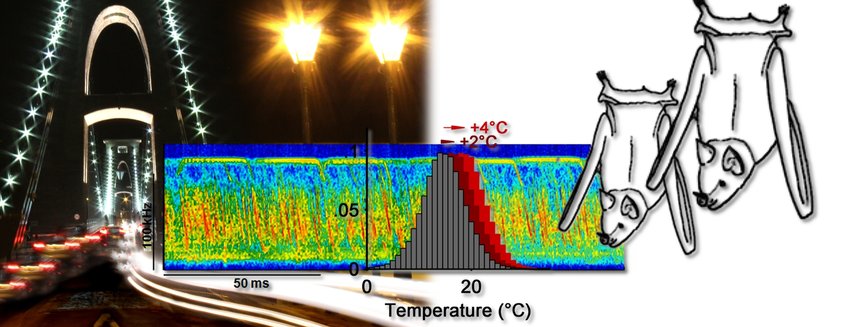
Environmental Influences on Biosonar
We are living in a fast changing world - so do animals. Some of the most pronounced changes globally include increasing human population and rising atmospheric CO2 concentration, leading to increasing air temperature, background noise and light pollution.
One feature that distinguishes echolocating bats from other animals is their strong dependence on high-frequency sounds for most of their activities, such as communication, spatial orientation, and foraging. In this project, we combine experimental tests and modelling to examine the effects of global warming and ambient noise on echolocation performance.

Sound transmission is temperature dependent, with high frequency sounds (e.g. echolocation call) attenuated more strongly than low frequency sounds (e.g. human speech). Modelling the prey detection ability of bats calling at different frequencies and in climate zones around the globe, we found that global warming can differentially affect bat species depending on call frequency, with species calling at low pitch gaining and species calling at high pitch loosing prey detection volume, respectively (Luo et al. 2014). Current projects investigate the biological significance of the temperature-dependence of the detection volume, and if bats are capable of perceiving and compensating temperature-dependent changes in prey detection volume.
Ambient noise represents another environmental factor that may severely constrain sound transmission, and animals may react dynamically to reduce the interference. In a series of playback experiments, we investigate the vocal strategies that bats use to mitigate noise interference. Ultimately, we target at a mechanistic understanding of how noise is affecting communication and which vocal changes are suited for dealing with noise based on the underlying perceptual processes. This project is in collaboration with Prof. Lutz Wiegrebe, LMU Munich, and Dr. Henrik Brumm, MPI for Ornithology.
